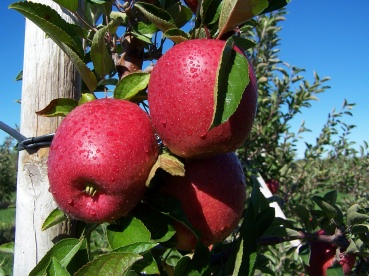
As a child it was a joy to visit my apple orchard. Planted by my grand father it grew and flourished under the tender care of my father. Today maintaining it has been an uphill task. New trees simply don’t survive and older ones are dying fast. This is the story you will hear all over the apple-growing belt of Himachal Pradesh and farmers attribute this to climate change.
Over the years, fruit growers in Himachal have observed significant variations in climate. This awareness of climate change is based mainly on the associated impacts on the apple crop especially on blossoming, fruit setting, yield and increased incidences of pests and diseases.
Over all the climate is described as being much warmer and people perceive a definite reduction in snowfall over time. Not only has the actual amount of snowfall decreased but changes in timing of snowfall have also been noticed. Snowfall in December and January has become rare and the period of snowfall now extends through the months of February-March. There is also a perception that weather has become more erratic. For example the hottest month is no longer the traditional month of jeth (May-June) but has shifted ahead. Similarly, spring is colder and winters warmer than the usual.
Warmer climate has made it harder to get a decent crop in the lower and middle elevation belt and apple orchards have shifted to higher altitudes to find a cooler place to grow. Bajoura, located in the lower part of the Kullu valley, produced good quality apples about a few decades ago. Today, there is a general consensus that the lower limit of apples has now reached Raison about 30 kilometers up the valley. Similarly in the Kotgarh region, villages in the middle elevation belt produced some of the finest apples during the 1970s and early 1980s. Today farmers here are struggling to replant their orchards. A similar trend is noticed elsewhere in the state. Apple growers also attribute climate change to the increase in plant diseases and pests and an increasing numbers of sprays are now required for the routine control of pests.
As temperature continue to rise and rainfall becomes more erratic, apples are struggling to survive and cope with increasing stream of new pests and diseases. Large orchard owners may well survive this onslaught initially, but it is the small and medium farmers who are a worried lot.




